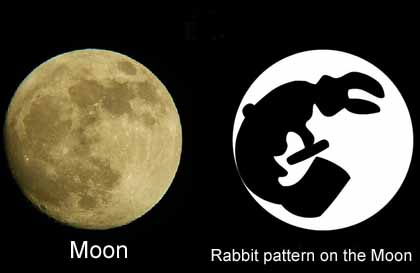Tsukimi: Moon Viewing and the Beauty of Autumn
- ケイトリン

- Apr 14
- 4 min read
Updated: Jul 28

As the days grow shorter and the light begins to soften here in South Africa, we notice the quiet signs of autumn settling in. Chilly evenings arrive, and with them comes the comforting return of warm drinks, scarves, and slower evenings.
On the other side of the world, in Japan, the same time of year brings the opposite... a shift into spring, with plum and cherry blossoms bursting into bloom and the air filled with a sense of new beginnings. Despite these seasonal differences, there's one tradition that beautifully bridges the distance between us: Tsukimi (月見), or moon viewing. Tsukimi Moon Viewing
This centuries-old Japanese custom offers something quietly universal. You might not even realise you're taking part in something so cultural significant to Japan; you may simply see it as a quiet moment of stillness and reflection, a pause to look up at the moon and feel connected.
What Is Tsukimi Moon Viewing? 🍁

So, what exactly is Tsukimi and why has it captured the hearts of people for over a thousand years? Tsukimi, sometimes called Otsukimi, literally means “moon viewing.” It’s a celebration held in Japan during the 8th lunar month, typically falling in September or October. In 2025, Tsukimi will be observed on October 6th.
While this marks the beginning of autumn and the harvest season in Japan, for us in South Africa, the date coincides with our own gentle slide into autumn, which stretches from March to May. Though Japan may be watching blossoms bloom while we begin to pull out our blankets, the underlying spirit of Tsukimi remains universally resonant as an appreciation for the seasons and the beauty of nature in transition.
A Glimpse into Tsukimi’s Origins

The tradition of Tsukimi can be traced back to Japan’s Heian period (794–1185), when aristocrats would gather on elegant boats to sip sake, enjoy music, and admire the glow of the mangetsu (満月), or full moon. These gatherings were refined and poetic affairs, often accompanied by singing and live performances on the water.
As time passed, the custom found new life during the Edo period, particularly around the autumn harvest festivals held in September. The idea of noble moon-viewing struck a romantic chord with the public, and it evolved into something more accessible, with garden gatherings and poetry recitals under the moonlight. Ordinary people began incorporating Tsukimi into their own seasonal traditions, using it as a time to give thanks for the harvest and reflect on the passing year.
In many ways, it became a quiet, autumnal counterpart to the lively cherry blossom viewings of spring. And though centuries have passed, the heart of Tsukimi remains the same: friends and families still come together to admire the moon, enjoy symbolic offerings, and celebrate the beauty of a season in transition.
What do people offer?
One of the most iconic symbols of Tsukimi is the tsukimi dango (月見団子) - smooth, white rice dumplings shaped like little moons. Traditionally, these rice cakes were made as moon-shaped offerings to the moon deity, praying for a bountiful rice harvest. Don’t worry, though... they’re meant to be eaten afterward, and doing so is said to bring luck, happiness, and prosperity.
Other popular items around the time include Satoimo (里芋, taro root), representing autumn’s bounty, Edamame beans, and even Sake (Japanese rice wine), all common offering to the moon in Japanese tradition. Susuki (すすき), Japanese pampas grass, is another well-known symbol of the rice harvest and common Tsukimi decorations. These items are placed near a window or balcony facing the moon, often arranged beautifully with lanterns and decorations.
Nowadays in Japan, while not everyone upholds the offerings described above, it's not uncommon for people to host moon-viewing parties in public parks where evening are spent with family and friends, lanterns casting a soft glow as everyone enjoys eating sweet dango under the moonlight.
The Moon Rabbit
If you've been to Japan around this Autumn period, you may have noticed an abundance of rabbits. So why the rabbit? What does it have to do with the moon or this time of year? We have to look to Japanese folklore for the answer, and it tells of a rabbit living on the moon, endlessly pounding mochi with a wooden mallet. It’s a whimsical image, often seen in seasonal sweets and decorations during Tsukimi.
If you look closely at the full moon from your backyard - whether you're in Cape Town, Johannesburg, or anywhere else - you might just spot the shape of that rabbit, too, reminding us that even from across the globe, we’re all looking at the same moon.
Bringing Tsukimi to South Africa

Just because we’re far from Japan doesn’t mean we can’t celebrate Tsukimi. Autumn looks different all over the world, although the moon might look much the same. You don’t need to follow every tradition perfectly.
South Africans celebrating Tsukimi might make it their own by placing fynbos or autumn leaves on display, enjoying warm tea, or simply sitting under the stars on a crisp evening with family or friends. You might try your hand at a homemade dango recipe, writing a short poem or journal entry about the moon, or even learn a few seasonal Japanese words like:
月見(つきみ)– Moon viewing
満月(まんげつ)– Full moon
秋(あき)– Autumn
うさぎ – Rabbit
At its heart, Tsukimi is about appreciating the present moment more than following rigid ceremony. Imagine sitting on your stoep wrapped in a soft blanket, the scent of rooibos tea in the air, watching the full moon rise above swaying leaves and autumn skies.
Here at Nihongo no Niwa, we love finding ways to make traditional Japanese culture feel relevant and meaningful, even from across the globe. Tsukimi is a nice reminder that while the world may be large, we’re all connected by simple, beautiful things. Whether you’re learning Japanese, curious about cultural traditions, or simply looking for a way to feel connected to the rhythm of the seasons, Tsukimi is a beautiful excuse to slow down and look up. So this autumn, we invite you to create your own Tsukimi moment here in South Africa. Practice some of those language skills and whisper a few Japanese words to the moon. You never know... the rabbit might be listening. 🐇🌕












Comments